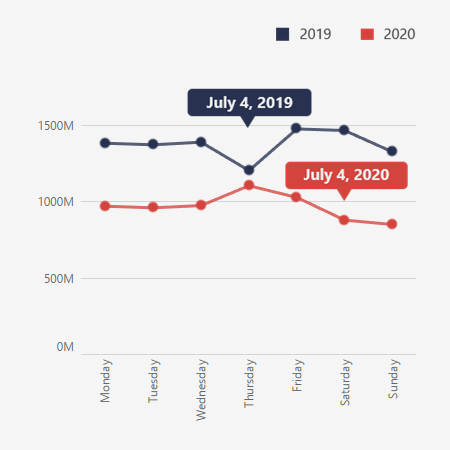Fourth of July travel numbers reveal continuing decline of motorists
The U.S. economy is slowly reopening but still not back to normal levels. Recent numbers from the Bureau of Transportation Statistics reveals that travel during the Fourth of July holiday was down significantly compared with this past year.
According to the Bureau of Transportation Statistics, 2.8 billion fewer trips were taken during the Fourth of July weekend compared to 2019. This year, Americans took 6.8 billion trips Monday through Sunday during the week of the Fourth of July. Last year, Americans logged 9.6 billion trips during the same time period.
However, there was an uptick in travel on July 4 this year, deviating from travel patterns in 2019. Last year, travel dropped on July 4. Although the uptick still kept travel below last year’s stats, it moved the numbers closer to what Americans traveled a year ago.

The drop in Fourth of July travel was largely the result of local trips, which is defined as travel under 50 miles.
Approximately 933 million average daily local trips were taken this year, compared to more than 1.3 billion taken last year. The steepest drop was with trips of 1-3 miles. Last year, Americans took 352 million average daily trips with 1-3 miles. This year, only 232 million trips of 1-3 miles were taken.
Long distance trips remained mostly stagnant relative to short distance trips. The number of average daily trips of 50-100 miles were nearly identical compared to last year. However, there were nearly 2 million fewer trips of more than 500 miles. On the other hand, there was a slight increase in trips of 250-500 miles. Additionally, there was a spike in average daily trips of 100-250 miles. This year, Americans took 9.6 million trips with a range of 100-250 miles, about 2 million more than last year.
Consistent with travel numbers, more people stayed at home during the Fourth of July week. A quarter of Americans stayed home this year, compared to 20% last year. On average, more people on the West Coast stayed at home compared to rest of the country. However, New York and Washington, D.C., reported the highest average daily percent of people staying at home at more than 30%.









